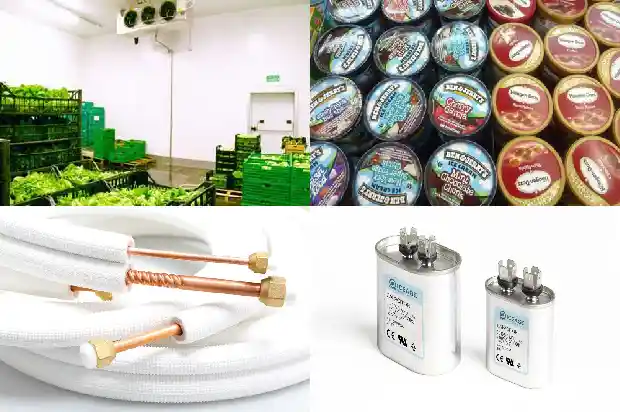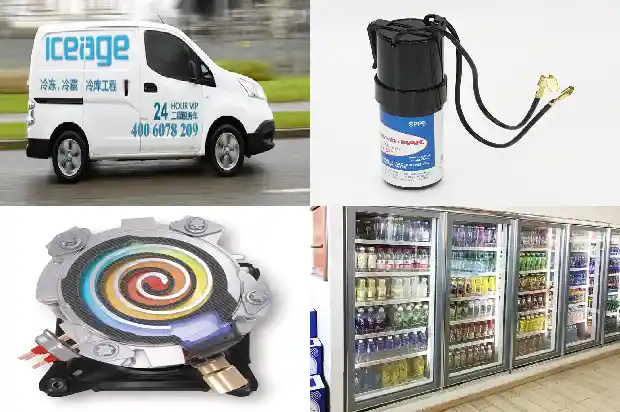What Are the Differences Among Freezer Warehouses, Quick - freezing Warehouses and Fresh - keeping Warehouses?
2025-04-04
I. What is a Quick - freezing Warehouse
A quick - freezing cold storage refers to a method in which food rapidly passes through its maximum ice - crystal - formation zone and is rapidly frozen when the average temperature reaches - 18°C. The temperature of a quick - freezing warehouse generally ranges from - 15°C to - 35°C. It is mainly used for the rapid low - temperature freezing of foods, pharmaceuticals, medicinal herbs, chemical raw materials, etc. It features rapid cooling and good freshness - keeping effect.
The so - called rapid freezing means that food rapidly passes through its maximum ice - crystal - formation zone and is rapidly frozen when the average temperature reaches - 18°C. During the freezing process, various changes occur in food, such as physical changes (volume, thermal conductivity, specific heat, dry - matter loss changes, etc.), chemical changes (protein denaturation, color change, etc.

II. Differences among Quick - freezing Warehouses, Freezer Warehouses, and Fresh - keeping Warehouses
We usually collectively refer to fresh - keeping warehouses, refrigerated warehouses, and freezer warehouses as cold storages. However, there are significant differences among the three.
In the industry, according to the different products stored and the requirements for cold - storage temperatures, cold storages are usually classified into the following types:
- Fresh - keeping Warehouse
The temperature of a fresh - keeping warehouse generally ranges from 0°C to 5°C. It is mainly used for freshness - keeping, that is, to maximally maintain the original quality and freshness of agricultural products for a relatively long time. The living bodies of agricultural products try not to die, and the cells are in a dormant state during the refrigeration process, reducing the loss of nutrients and maintaining a fresh quality. This is generally applied to fruits and vegetables. In the current fruit and vegetable industry, with centralized planting, during the processes of transportation and sale, it is inevitable to use cold storages to maintain the necessary nutrients of fruits and vegetables. - Freezer Warehouse
The temperature of a freezer warehouse generally ranges from - 15°C to - 18°C. Generally, foods are gradually put into the cold storage irregularly. After a certain period, the temperature of the cold storage reaches - 18°C, and the picking of goods is also irregular and not time - specific. There is no specific requirement for this "certain period", which is a typical refrigerated warehouse. For example, meats and aquatic products have high requirements for storage temperature to keep the meats from spoiling. And during the sales process, they also need to be taken out and stored irregularly. Generally, the cold storages in large supermarkets are refrigerated warehouses. - Quick - freezing Warehouse
The temperature of a quick - freezing warehouse generally ranges from - 35°C to - 40°C for the rapid freezing of materials. The low - temperature refrigerated warehouse has a temperature generally ranging from - 18°C to - 20°C for the long - term storage of rapidly frozen materials. It uses various refrigeration equipment, that is, the way of artificial refrigeration, to keep the indoor temperature at a certain low level. Many foods, such as ice - cream and seafood, need to be stored at a temperature of - 25°C to prevent spoilage. For example, if the storage temperature of ice - cream cannot reach - 25°C, its aroma will disappear; and the freshness and taste of seafood will be much worse. The characteristic of a low - temperature warehouse is that foods are gradually put into the cold storage irregularly. After a certain period, the temperature of the cold storage reaches - 25°C. There is no special cold - storage design process or technical requirements for this period, but there are strict requirements for the temperature of this cold storage, which should be between - 22°C and - 25°C. This is a typical low - temperature warehouse. Compared with the fresh - keeping warehouse, the mechanism of the freezer warehouse is very different. Excessively low temperatures can cause the death of cells in foods such as meats and seafood, and the freshness will be greatly affected. Therefore, for the storage of fruits, vegetables, and meats, the lower the temperature is not necessarily the better.
Related Articles
- What are the Differences between Controlled Atmosphere Cold Storage Technology and Traditional Cold Storage Technology?
- Analysis of Classification, Differences, Advantages and Disadvantages of Cold Storage Refrigeration Compressors
- What Are the Differences Between Chillers and General Water - cooled Equipment?
- What Are the Differences Between R22 and R404A Cold Storage Systems?
- Characteristics and Differences among Water System, Air System and Refrigerant System
- What Are the Differences Between Cold Storage and Freezer?
- Differences Between Steel Structure Cold Storages and Multi-story Civil Engineering Cold Storages
- Temperature Gradient Differences between Deep Foundation and Surface of Civil Cold Storage
- Differences, Requirements and Standards between Pharmaceutical Cold Storage and Conventional Cold Storage
- High Power Consumption of Constant Temperature Freezer and Its Solutions
- Maintenance and Operation of Freezing and Cold Storage Warehouses
- Winter Anti-freezing Measures for Air Conditioning Equipment and Fire Protection Systems
- A Brief Analysis of Quick - Freezing Cold Storage Design
- Why Can Air - Source Heat Pumps Be Damaged by Freezing? How to Prevent Freezing in Winter?
- Refrigeration System Circulation and Components for Freezing and Cold Storage
- How to Prevent Freezing for Air Conditioning Refrigeration Equipment?
- Introduction to Key Points of Compressor Grouping in Quick-freezing Cold Storage
- Freezing Chamber System Blockage, Dirty Blockage, and Oil Blockage Characteristics and Treatment Methods
